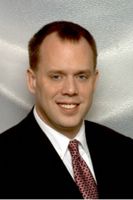Are Americans Saving Too Much?
 Some leading economists released a report challenging the notion that Americans are spendthrifts with a negligible savings rate. In fact, their research says the opposite -- that Americans have been duped by the financial industries to save too much. By surveying various online calculators made available free of charge on financial purveyors' websites, they concluded that the amount the financial firms suggest to save is way too much. Here is my opinion on the subject.
Some leading economists released a report challenging the notion that Americans are spendthrifts with a negligible savings rate. In fact, their research says the opposite -- that Americans have been duped by the financial industries to save too much. By surveying various online calculators made available free of charge on financial purveyors' websites, they concluded that the amount the financial firms suggest to save is way too much. Here is my opinion on the subject.First of all, the notion that Americans are NOT savers is hogwash, perpetuated by some laughably arcane statistics tracked by government bean counters. The statistics do not take into account savings directed to equity investments, 401k investments, real estate investments... just about anything except savings accounts. Our Asian counterparts still use bank accounts as the primary savings method, so we have an appearance of over-saving in Asia, and under-saving over here. Combined with the media's need to breathlessly proclaim impending doom, this statistic is WAY overplayed.
Now, do we save too much? In the aggregate, the economists may be right. But, people do not -- and should not -- plan based on aggregate numbers. Almost by definition, savings occurs when a family has a surplus over their basic needs. Since America has a significant and widening gap between rich and poor (whether this is good, bad, or indifferent is a subject for another post), the upper ends of the income distribution allow for excess savings, even if it is more than is required to ensure a comfortable retirement. You can also bet that the financial purveyors with online calculators are targeting the upper ends, as well.
The economists should approach the question as to the percentage of Americans that are saving to their reduced expectations. Or, they should take a poll and see how many Americans are saving AT ALL. I am afraid this answer would paint a much bleaker picture. Especially since any American under the age of 40 needs to question whether social security will exist anywhere close to its present form, I would rather have people over-save than otherwise.
Of course, using online calculators is a troublesome methodology. Financial math is easy. While every qualified investment adviser on the planet has planning tools that take care of the math part, an adviser's skill at identifying, clarifying, and prioritizing your goals is what separates the good professionals from the low-end service providers. Adding social criteria adds to the complexity. Such non-financial questions your financial adviser should be asking include:
- Do you want to simplify during retirement, or splurge?
- Do you want to stay put in your current residence, move around, or travel?
- Do you want to continue working part-time in a different role, volunteer, or leave the office behind forever?
- Do you care if your children have an inheritance?
Now, in defense of these economists, they gave a good clue as to their altruistic reason for releasing this research. They make a statement about "squandering youth" instead of squandering money. On this point, I could not agree more, but this also requires a detailed and regular self-examination of your values. Aggregate pictures are of no use whatsoever.
Time will be your most important asset, by far. For example, should you hire a housekeeper once a week, have the lawn mowed by someone else, send out the laundry? Or, should you save the money, and either let the chores slide, or take 3-5 hours per week away from the important people in your life, self-improvement, or leisure activities? Even in my own family, we struggle with these questions.
Working through these questions is where a financial planner earns your money.
















